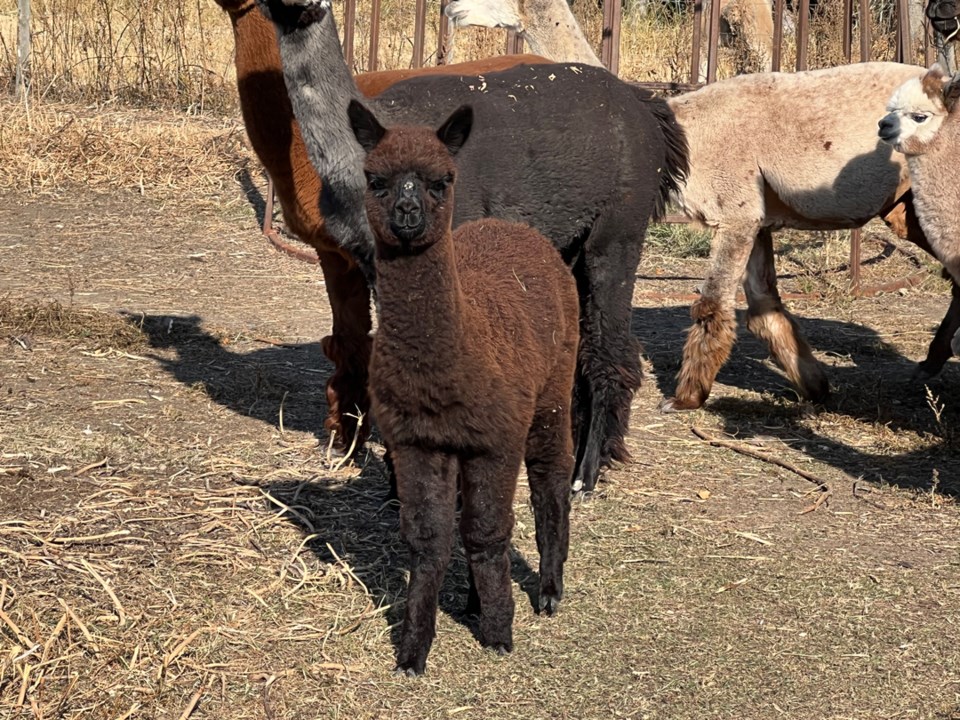CREELMAN - Years ago, Glenda and Tim Shotter attended the Canadian Western Agribition in Regina.
As they strolled past the livestock, they came across the alpacas, which sparked an interest with Glenda.
Shotter also attended the trade show and purchased a pair of alpaca mitts. It was then that Shotter was hooked.
In 2011, Shotter began to purchase her registered alpacas for their farm northwest of Creelman, where she lives with her husband Tim and four sons.
There are two kinds of alpacas. Suri produce a longer, cylindrical locks, similar to dreadlocks. The huacaya produces curly, dense and soft wool. Shotter owns huacaya alpacas.
Shotter is very particular when she purchases livestock. They need to be the right size and have a great temperament. Their genetics need to be strong and have excellent fiber.
When a female reaches the age of two, they are at the breeding age. They are pregnant for 11-12 months and usually have their cria in June, when the weather is pleasant.
When the babies are born, they are given a vitamin shot and they remain with their mother until they weigh 60 pounds or for approximately six months. Shotter likes to leave the cria with their mothers until spring, and then weaned before the first show. At eight to 12 months they are shorn for the first time.
Shotter’s herd consists of six males, 18 females and eight cria. Her herd also ranges in colour, including grey, black, brown, beige and fawn.
Once a year the alpacas are shorn, usually in June. It is at this time they are also dewormed. The wool is sent away to be graded from one to six on its softness.
The softest wool is used for scarves and shawls, while the courser yarn is used for socks and mitts.
Alpaca wool is a hallow fiber, which allows the material to breath, therefore keeping a person warmer.
Shotter said she went to Vancouver while her sister was in a bike tour. It rained a lot, and it was cold. She wore alpaca socks that got soaked, yet her feet remained warm the whole time.
According to Shotter, alpaca wool is four to five times warmer than regular wool.
At times, Shotter likes to keep her wool separate from her animals, so special items may be made from them, and she will know which one of her herds produced the wool.
At the end of November, Shotter will attend the Canadian Western Agribition in Regina. She will have a both set up with her handmade items. Although she is unable to make all the items, she assures that her booth contains Canadian-made product.
Her animals have also been shown and have won many ribbons.
They are judged in halter, with 60 per cent of their mark for their fleece and 40 per cent on confirmation. They are also judged on uniformity of colour, how they are to manage, their density and crimp of their coat.
The Shotter’s are a busy family, as they also grain farm a significant amount of land, but they love life and enjoy the alpaca herd.



